Abstract
The fungicide α-(2,4-dichlorophenyl)-α-phenyl-5-pyrimidine methyl alcohol (triarimol) and four other structural analogs of this substance, in which one or more of the substituents were varied, were tested for their comparative effects on growth and gibberellin biosynthesis in the fungus Gibberella fujikuroi. Each of the five analogs tested was capable of inhibiting growth as measured by dry weight in 5-day-old cultures. Three of them [α-(2-chlorophenyl)-α-(4-chlorophenyl)-5-pyrimidine methyl alcohol, fenarimol; α-(2-chlorophenyl)-α-(4-fluorophenyl)-5-pyrimidine methyl alcohol, nuarimol; and triarimol] were effective at appreciably lower concentrations than the other two [α-(4-chlorophenyl)-α-(1-methylethyl)-5-pyrimidine methyl alcohol, experimental compound EL 509; and α-cyclopropyl-α-(4-methoxyphenyl)-5-pyrimidine methyl alcohol, ancymidol].
All five substances also inhibited gibberellin production as measured by gibberellin content of fungus filtrates. The relative effectiveness of the compounds as inhibitors of growth and gibberellin production were similar. These analogs were also shown to inhibit ent-kaurene oxidation by microsomal preparations from fungal mycelia. Thus, the site of inhibition of gibberellin biosynthesis may be the same for the fungus as the one affected by this group of substances in higher plant tissues.
The structure-activity relationships between the analogs are opposite to those observed in higher plant tissues. The fungicides fenarimol, nuarimol, and triarimol, which were most effective in inhibiting growth and gibberellin biosynthesis in the fungus, were much less effective than EL 509 and ancymidol in inhibiting growth and gibberellin biosynthesis in higher plants. These results indicate that the ent-kaurene oxidase systems from the two sources have somewhat different molecular characteristics, and thus, interact differently with this group of substances.
Full text
PDF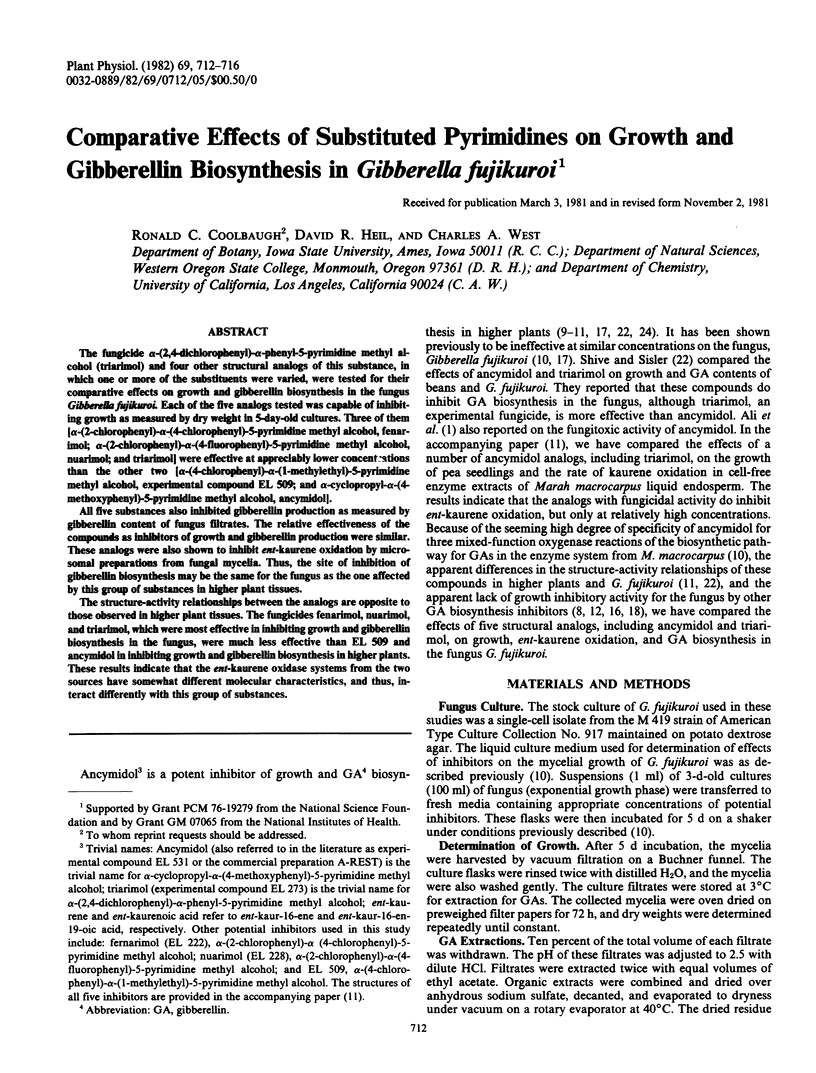
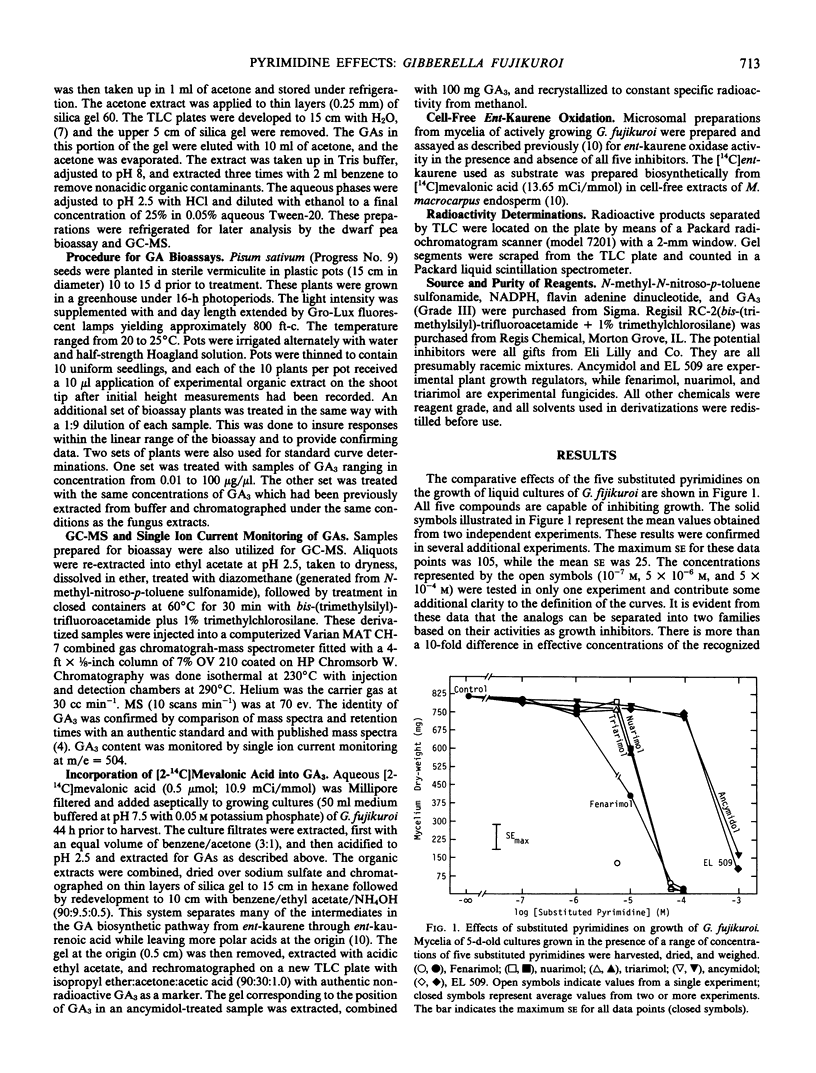
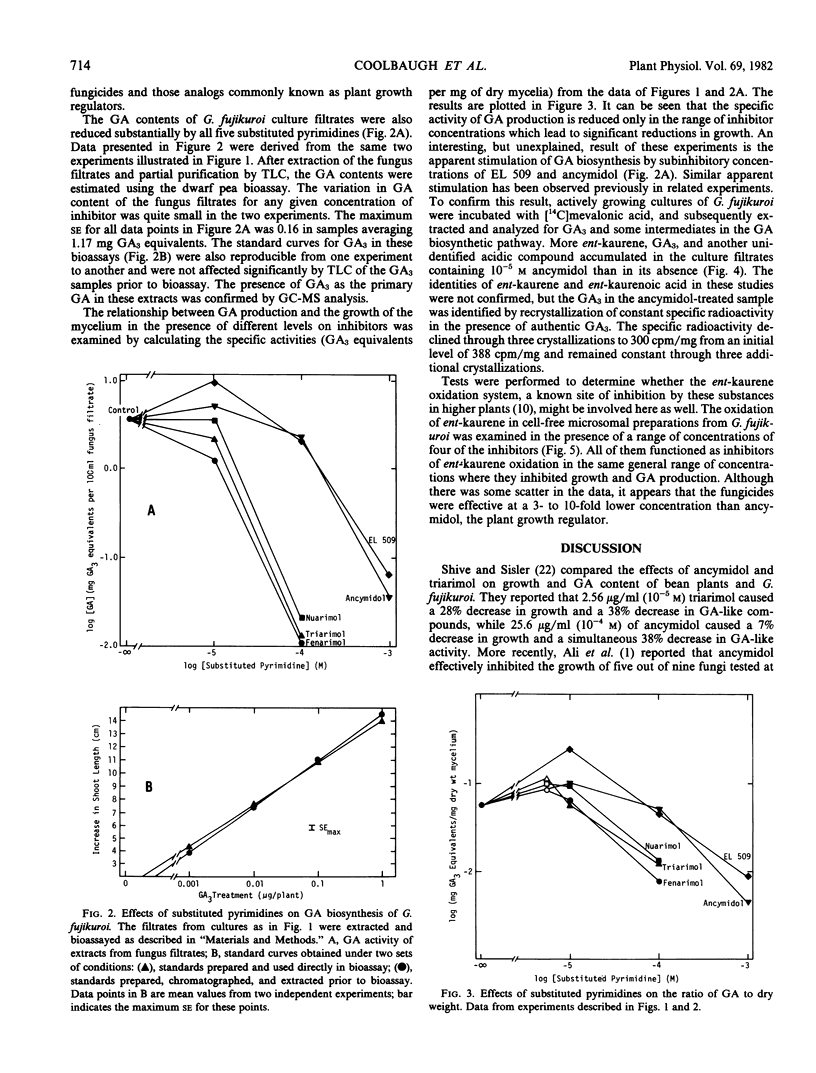
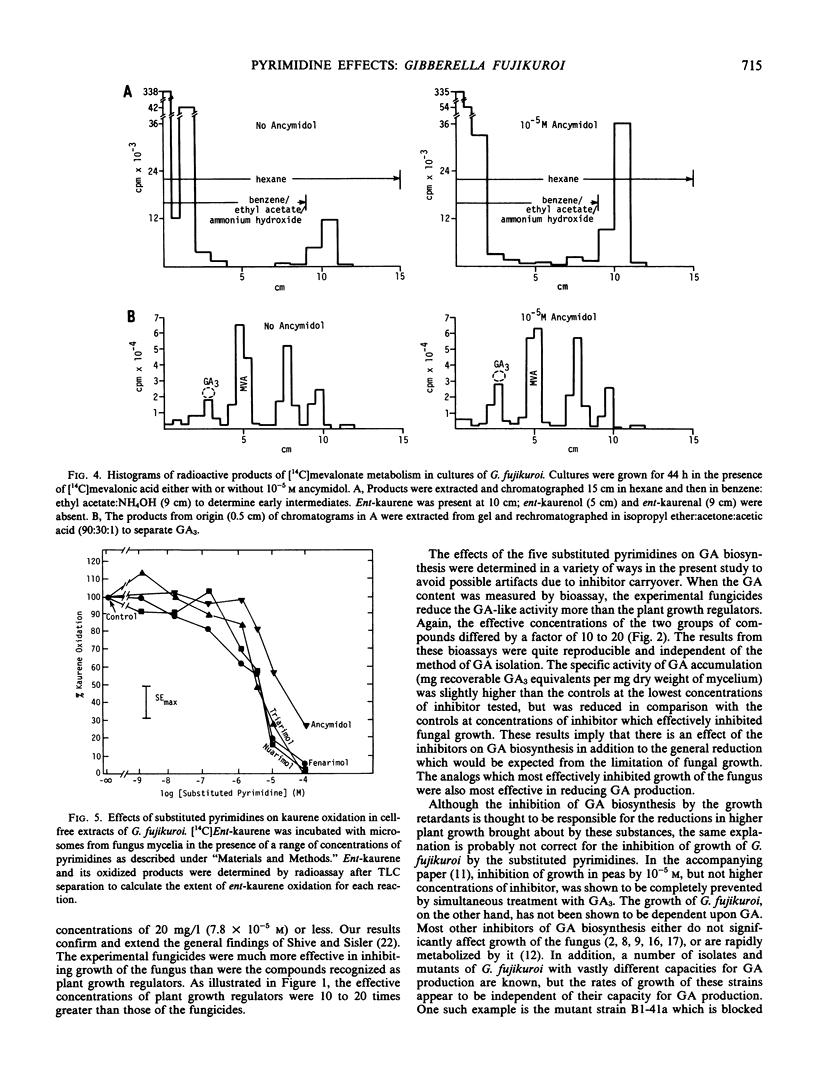
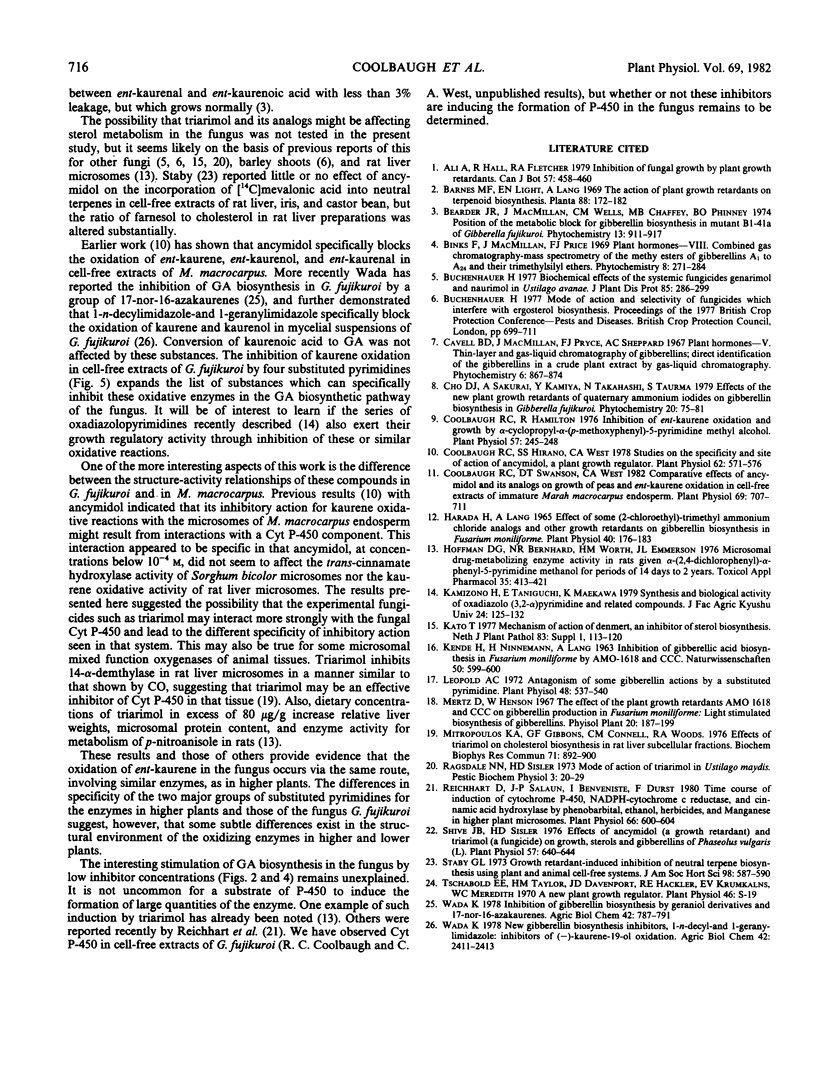
Selected References
These references are in PubMed. This may not be the complete list of references from this article.
- Coolbaugh R. C., Hamilton R. Inhibition of ent-Kaurene Oxidation and Growth by alpha-Cyclopropyl-alpha-(p-methoxyphenyl)-5-pyrimidine Methyl Alcohol. Plant Physiol. 1976 Feb;57(2):245–248. doi: 10.1104/pp.57.2.245. [DOI] [PMC free article] [PubMed] [Google Scholar]
- Coolbaugh R. C., Hirano S. S., West C. A. Studies on the Specificity and Site of Action of alpha-Cyclopropyl-alpha-[p-methoxyphenyl]-5-pyrimidine Methyl Alcohol (Ancymidol), a Plant Growth Regulator. Plant Physiol. 1978 Oct;62(4):571–576. doi: 10.1104/pp.62.4.571. [DOI] [PMC free article] [PubMed] [Google Scholar]
- Coolbaugh R. C., Swanson D. I., West C. A. Comparative Effects of Ancymidol and Its Analogs on Growth of Peas and Ent-Kaurene Oxidation in Cell-Free Extracts of Immature Marah macrocarpus Endosperm. Plant Physiol. 1982 Mar;69(3):707–711. doi: 10.1104/pp.69.3.707. [DOI] [PMC free article] [PubMed] [Google Scholar]
- Harada H., Lang A. Effect of some (2-chloroethyl) trimethylammonium chloride analogs and other growth retardants on gibberellin biosynthesis in Fusarium moniliforme. Plant Physiol. 1965 Jan;40(1):176–183. doi: 10.1104/pp.40.1.176. [DOI] [PMC free article] [PubMed] [Google Scholar]
- Hoffman D. G., Bernhard N. R., Worth H. M., Emmerson J. L. Microsomal drug-metabolizing enzyme activity in rats given alpha-(2,4-dichlorophenyl)-alpha-phenyl-5-pyrimidinemethanol for period of 14 days to 2 years. Toxicol Appl Pharmacol. 1976 Mar;35(3):413–421. doi: 10.1016/0041-008x(76)90064-8. [DOI] [PubMed] [Google Scholar]
- Leopold A. C. Antagonism of some gibberellin actions by a substituted pyrimidine. Plant Physiol. 1971 Nov;48(5):537–540. doi: 10.1104/pp.48.5.537. [DOI] [PMC free article] [PubMed] [Google Scholar]
- Mitropoulos K. A., Gibbons G. F. Effect of triarimol on cholesterol biosynthesis in rat-liver subcellular. Biochem Biophys Res Commun. 1976 Aug 9;71(3):892–900. doi: 10.1016/0006-291x(76)90915-3. [DOI] [PubMed] [Google Scholar]
- Reichhart D., Salaün J. P., Benveniste I., Durst F. Time Course of Induction of Cytochrome P-450, NADPH-Cytochrome c Reductase, and Cinnamic Acid Hydroxylase by Phenobarbital, Ethanol, Herbicides, and Manganese in Higher Plant Microsomes. Plant Physiol. 1980 Oct;66(4):600–604. doi: 10.1104/pp.66.4.600. [DOI] [PMC free article] [PubMed] [Google Scholar]
- Shive J. B., Sisler H. D. Effects of Ancymidol (a Growth Retardant) and Triarimol (a Fungicide) on the Growth, Sterols, and Gibberellins of Phaseolus vulgaris (L.). Plant Physiol. 1976 Apr;57(4):640–644. doi: 10.1104/pp.57.4.640. [DOI] [PMC free article] [PubMed] [Google Scholar]


